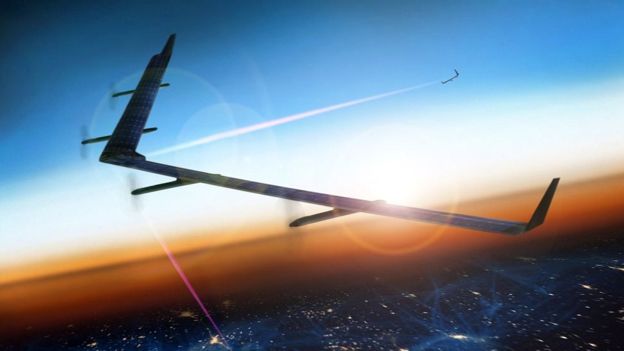Facebook’s laser drones v Google’s net-beaming balloons

The sky is going to become a busier place if Facebook and Google get their way.
The tech firms are investing in rival efforts to beam the internet down to the ground from flying objects in the stratosphere – twice as high as aeroplanes normally fly.
Facebook aims to build a network of laser-beaming drones that will tightly circle known black-spots.
Google also has a drone project about which it’s tight-lipped.
But the company is more open about an attempt to send “strings” of giant balloons circumnavigating the globe to provide persistent data links to the parts of the planet they pass.
The schemes may both seem far-fetched.
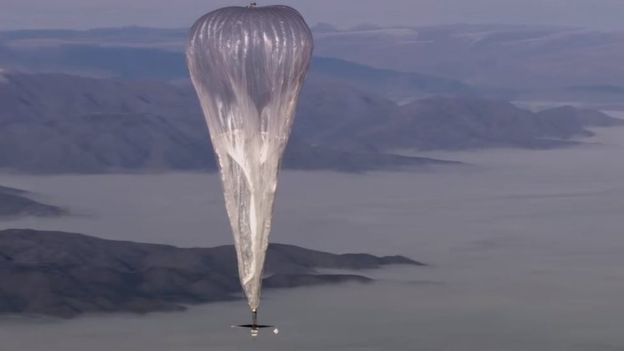
But the brains behind both companies’ efforts told the BBC they are convinced they have a real shot at connecting the 57% of the world’s population still offline.
Carbon covered
Of the two projects, Facebook’s plan is arguably at an earlier stage.
“It has not flown yet, that’s the next milestone,” the social network’s engineering chief Jay Parikh acknowledges.
But he says he hopes the first drone will be airborne before the year’s end.
“Don’t tell Mark I said that,” he hurriedly adds, referring to Facebook’s chief executive.
“I’m trying to manage Mark’s expectations.”
The aircraft is called Aquila 1 and was recently built in Somerset, England before being shipped to a secret test site.
The drone is wider than a Boeing 737 jet but looks quite different, since there’s no need to carry passengers or a pilot.
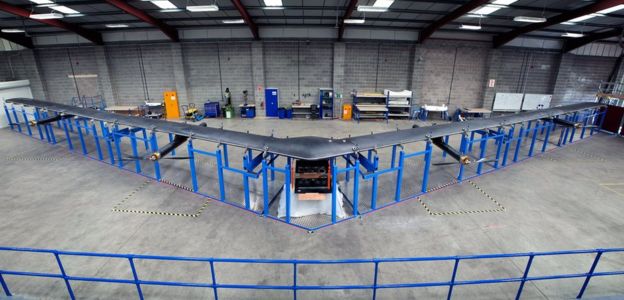
The sleek giant structure is made of a thin layer of foam covered in carbon fibre, with four propellers attached.
“The whole structure is 142ft (43m) wide but weighs less than a Toyota Prius,” Mr Parikh explains.
“The structure and stiffness of the plane is all in the carbon fibre of the wing and that supports everything, the [internet-providing] payload, the batteries, and the solar panels on top.”
The aim is to build a fleet of the drones with radio transmitters fitted underneath to beam data across a 100 mile (160km) diameter zone below.
Terminals on the ground would use the signals to provide the internet to people’s computers.
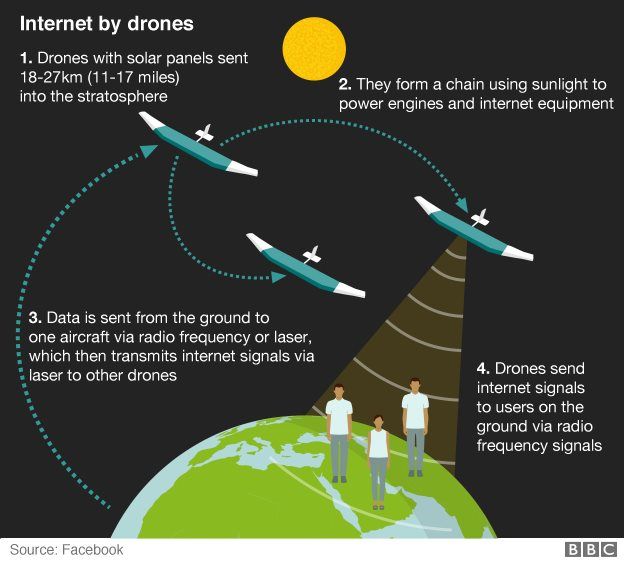
Facebook wants the drones to stay aloft for three months at a time.
That alone would be an impressive feat – the current record is about a fortnight.
But the really tricky bit involves creating a sky-high network with several drones acting as intermediary connection points, so that a fast connection sent from a city can be distributed outwards to the final aircraft in the chain as far as 300km (186 miles) away.
To help keep data speeds high, Facebook aims to beam lasers between the aircraft across significant distances.
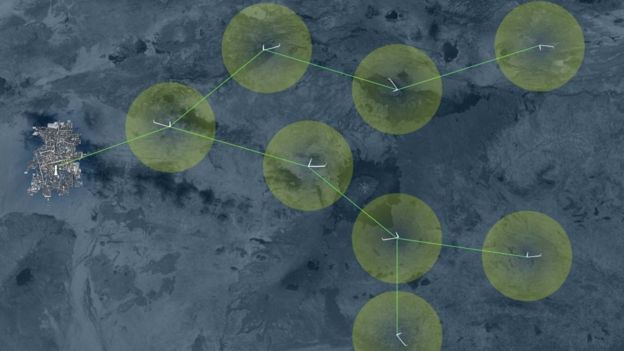
“The analogy that we have come up with is this: If I took a US dime [18mm in diameter] and I walked 11 miles away from you, and then you had a laser in your hand, you would have to hit that dime,” says Mr Parikh.
“And by the way, these are not stationary targets – these are moving.
“So, we have to do this and keep this pointed and connected while the one point and the other point are moving.
“It’s pretty freaking hard.”
The firm has already trialled the tech in its California labs, but making it work 27km above ground will not be easy.
